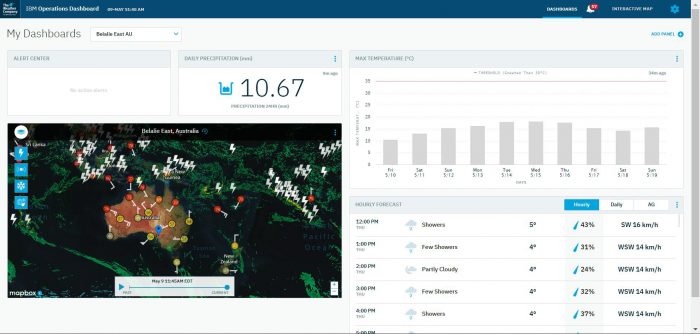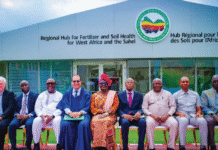Global expansion of IBM Watson Decision Platform for Agriculture taps AI, weather and IoT data so growers, food companies and agribusiness can boost production
IBM announced the global expansion of Watson Decision Platform for Agriculture, with AI technology tailored for new crops and specific regions to help feed a growing population. For the first time, IBM is providing a global agriculture solution that combines predictive technology with data from The Weather Company, an IBM Business, and IoT data to help give farmers around the world greater insights about planning, ploughing, planting, spraying and harvesting.
By 2050, the world will need to feed two billion more people without an increase of arable land[1]. IBM is combining power weather data – including historical, current and forecast data and weather prediction models from The Weather Company – with crop models to help improve yield forecast accuracy, generate value, and increase both farm production and profitability. “As a farmer, the wild card is always weather. IBM overlays weather details with my own data and historical information to help me apply, verify, and make decisions,” said Roric Paulman, owner/operator of Paulman Farms in Southwest Nebraska. “For example, our farm is in a highly restricted water basin, so the ability to better anticipate rain not only saves me money but also helps me save precious natural resources.”
New crop models include corn, wheat, soy, cotton, sorghum, barley, sugar cane and potato, with more coming soon. These models will now be available in the U.S., Canada, Mexico, and Brazil, as well as new markets across Europe, Africa and Australia. “These days farmers don’t just farm food, they also cultivate data – from drones flying over fields to smart irrigation systems, and IoT sensors affixed to combines, seeders, sprayers and other equipment,” said Kristen Lauria, general manager of Watson Media and Weather Solutions, IBM. “Most of the time, this data is left on the vine — never analysed or used to derive insights. Watson Decision Platform for Agriculture aims to change that by offering tools and solutions to help growers make more informed decisions about their crops.”
The average farm generates an estimated 500,000 data points per day, which will grow to 4 million data points by 2036[2]. Applying AI and analysis to aggregated field, machine and environmental data can help improve shared insights between growers and enterprises across the agriculture ecosystem. With a better view of the fields, growers can see what’s working on certain farms and share best practices with other farmers. The platform assesses data in an electronic field record to identify and communicate crop management patterns and insights. Enterprise businesses such as food companies, grain processors, or produce distributors can then work with farmers to leverage those insights. It helps track crop yield as well as the environmental, weather and plant biologic conditions that go into a good or bad yield, such as irrigation management, pest and disease risk analysis and cohort analysis for comparing similar subsets of fields.
The result isn’t just more productive farmers. Watson Decision Platform for Agriculture could help a livestock company eliminate a certain mold or fungus from feed supply grains or help identify the best crop irrigation practices for farmers to use in drought-stricken areas like California. It could help deliver the perfect French fry for a fast food chain that needs longer – not fatter – potatoes from its network of growers. Or it could help a beer distributor produce a more affordable premium beer by growing higher quality barley that meets the standard required to become malting barley.

Watson Decision Platform for Agriculture is built on IBM PAIRS Geoscope from IBM Research, which quickly processes massive, complex geospatial and time-based datasets collected by satellites, drones, aerial flights, millions of IoT sensors and weather models. It crunches large, complex data and creates insights quickly and easily so farmers and food companies can focus on growing crops for global communities.
IBM and The Weather Company help the agriculture industry find value in weather insights. IBM Research collaborates with start up Hello Tractor to integrate The Weather Company data, remote sensing data (e.g., satellite), and IoT data from tractors. IBM also works with crop nutrition leader Yara to include hyperlocal weather forecasts in its digital platform for real-time recommendations, tailored to specific fields or crops. IBM acquired The Weather Company in 2016 and has since been helping clients better understand and mitigate the cost of weather on their businesses. The global expansion of Watson Decision Platform for Agriculture is the latest innovation in IBM’s efforts to make weather a more predictable business consideration. Also just announced, Weather Signals is a new AI-based tool that merges The Weather Company data with a company’s own operations data to reveal how minor fluctuations in weather affects business.
The combination of rich weather forecast data from The Weather Company and IBM’s AI and Cloud technologies is designed to provide a unique capability, which is being leveraged by agriculture, energy and utility companies, airlines, retailers and many others to make informed business decisions.









